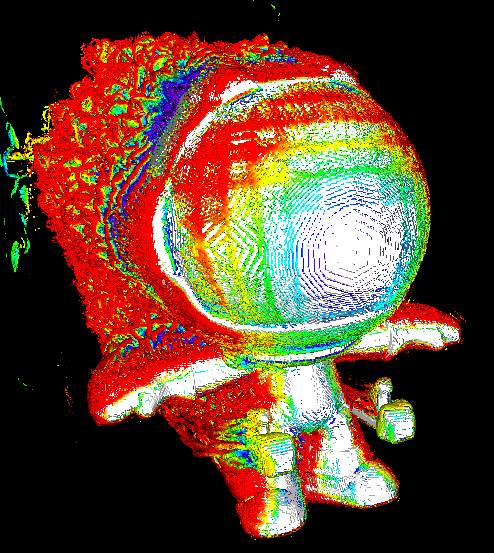my reasoning: the actual colors we can see -> the wavelengths that we can extrapolate to -> basically extrapolated wavelengths plus an ‘unpure-ness’ factor -> not even real wavelengths (ok well king blue and maybe lavender if I’m being generous could be)


look at this chart, and look for the pink. It isn’t there, because pink isn’t real
I should have excluded king blue and violet tho, those are actually real, mb
look at this guy who only understands hue LMAO
light has three parts that are needed to define color. hue, saturation, luminance. the difference between orange and brown is saturation. a thing that affects color visually undeniably. you can’t just throw a hue chart at us and pretend the other parts don’t exist.
you can achieve this result through rgb color mixing by controlling percentages. for example magenta is going to be like 50% red. and 50% blue. pink is just 20% red. your chart only shows colors at 100% intensity and additive mixing. color behaves differently whether you’re mixing light or pigments. light will combine to create white. you literally have to combine the different frequencies. this is additive mixing and where rgb is used. there is also subtractive mixing where color is defined by what frequencies are reflected and which are absorbed. when you mix all the colors together this way you get black, because all frequencies will be absorbed. this method uses ryb as its primaries.
so this all really depends on whether we’re looking at additive or subtractive. you seem to be a little confused on your color swatches there. following additive mixing, like you seem to be, you should say white is real and black isn’t. though neither is true. they’re just 100,100,100 and 0,0,0 respectively.
-a professional colorist and videographer
I’ll start by saying the computer rgb and hsl models are an abstraction matching how we perceive light that doesn’t include any other spectral information that we can’t see
in terms of wavelengths of light, pink is not a hue, unlike other fully saturated colors it does not have a wavelength to go along with it
yes, you can combine red and blue to make pink, but then you’re looking at the wavelengths of red and blue and not those of pink (because pink doesn’t have a wavelength)
any color that isn’t red, green, or blue could be any one of an unlimited number of spectrums that would produce the same perceived result, but any fully saturated color other than pink does have one single wavelength that goes along with it
like I said above, hue is analogous to wavelength, saturation is analogous to the ‘unpure-ness’ of the wavelengths, and value/luminance is analogous to the quantity of those wavelengths - and pink is one that breaks this pattern
oh my God, you don’t make pink by combining red and blue, you make pink by decreasing the intensity of the red.
my whole point was that color is a percieved thing. it is more than wavelength. you are trying to say the only thing that can be defined as color is the wavelength of light. there’s more to it than that. like, congrats you proved that hue is not the only thing that defines color. well done. unfortunately reality exists. we can go and point to red, pink, and purple and differentiate then mathematically with scientific tools. to say that isn’t color is incorrect and pedantic.
hue is just frequency. color includes intensity and color mixture. if you want to say that color is just a percieved experience and isn’t real then sure maybe you have a point, but that means all color.
what you really mean is that pink and other colors aren’t on the rainbow. that doesn’t make them not real.
and yes hue, saturation, and luminance are abstractions. much like acceleration is an abstraction of distance over time over time. that’s why i also defined it by color mixing terms. i can pull out a spectrum analyzer right now and show you saturation and luminance with data.
I guess you could call this pink but I would normally think of it more in the magenta range of
but I would normally think of it more in the magenta range of
 or
or

in the c/196 banner there is more red than green, meaning the fully saturated version wouldn’t correspond to a real wavelength
anyways, I’m not trying to say that those colors don’t exist because obviously we can see them, just that they show the weaknesses of human color perception
Salmon
Fuscia the dye
Fuscia the flower on the stem.
Temba, his arms wide